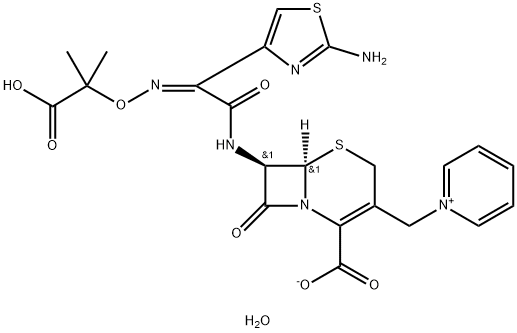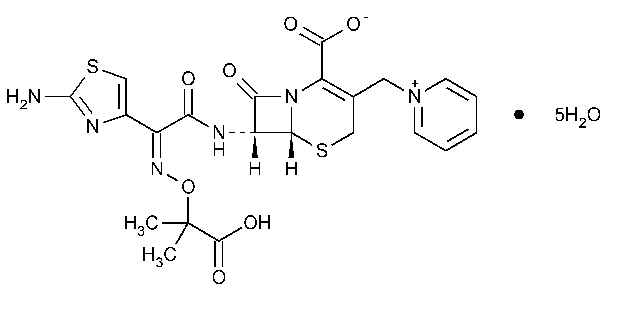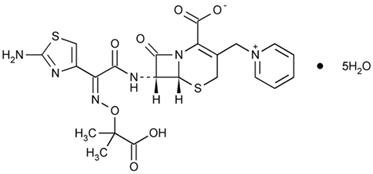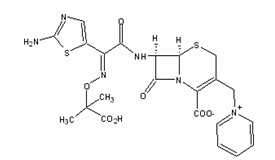Ceftazidime
(6R, 7R, Z ) -7 - ( 2 - (2 -aminothiazol- 4-yl) - 2 - (2- carboxypropan -2- yloxyimino ) acetamido )-8 -oxo- 3 - ( pyridinium -1 -ylmethyl) -5 -thia -1-aza -bicyclo [ 4.2.0 ] oct -2-ene -2-carboxylate
J01DD02
White powder
Risk
Template: Infobox chemical / molecular formula search available
Ceftazidime is one belonging to the 3rd generation cephalosporins antibiotic. It has a high activity against most Gram-negative bacteria including Pseudomonas aeruginosa.
Spectrum of activity
Ceftazidime, cefotaxime has, like a broad spectrum of activity against gram -negative bacteria, in contrast to that against Pseudomonas aeruginosa and the excitation of the rare tropical disease melioidosis, Burkholderia pseudomallei. In Gram- positive ceftazidime has a weaker effect than cefotaxime, for example, only moderately to weakly streptococci and staphylococci on. It is ineffective in MRSA and ESBL.
Indications
Ceftazidime should be used primarily for the treatment of suspected or proven infections caused by Pseudomonas aeruginosa. An authorization is for the following infections when they are heavy and caused by ceftazidime - susceptible pathogens: respiratory infections, urinary tract infections, skin and soft tissue infections, infections of the genital organs of the abdominal cavity, the bones and joints and as a result of hemodialysis or peritoneal dialysis.
Application
Ceftazidime is administered parenterally, usually by intravenous infusion. In addition, it is approved for intramuscular and intravenous injection.
Pharmacokinetics
Ceftazidime is practically not absorbed after oral administration. After parenteral administration, it has a biological half-life of about 2 hours. In the serum there is to about 10 % bound to protein in most tissues it reaches concentrations that are above the typical minimum inhibitory concentrations susceptible organisms. It is excreted almost entirely by glomerular filtration via the kidneys, the dose should therefore be adjusted in renal insufficiency. A metabolism in the liver does not occur.
Side effects
Allergic reactions are much rarer than with penicillins. Also rarely occur in blood disorders such as thrombocytopenia, leukopenia or eosinophilia. Other side effects are caused inter alia by the damage to the physiological bacterial flora, such as Candida infections of the vagina and mouth and diarrhea.
Trade names
- Fortum (D), Fortam (CH ), several generic


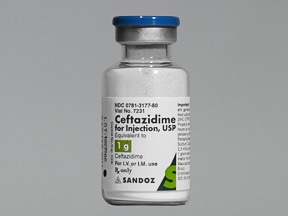


,%2525201gmVial,%252520SDV,%25252010%252520Vials%252520per%252520Tray%252520McGuffMedical.com.jpg)
